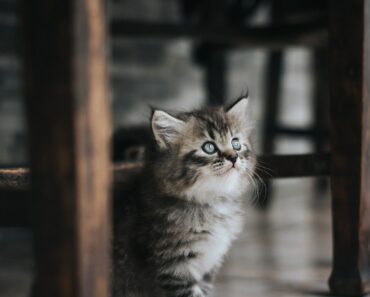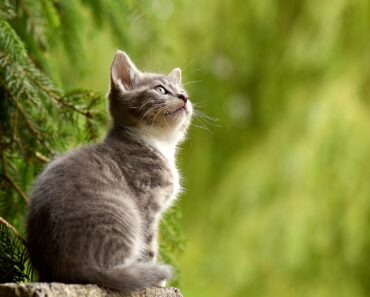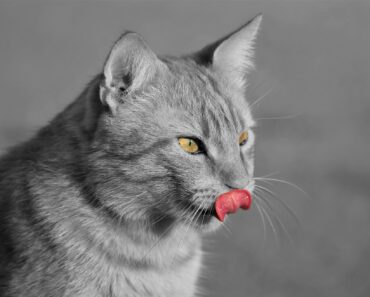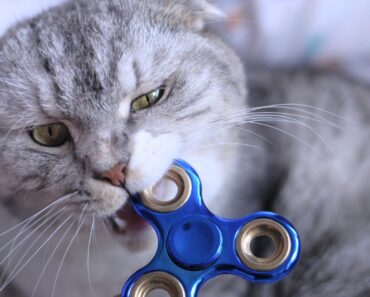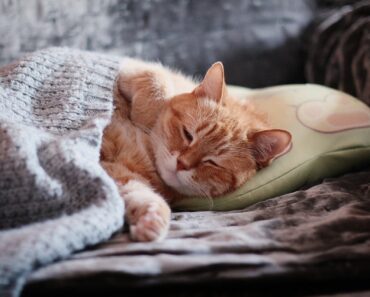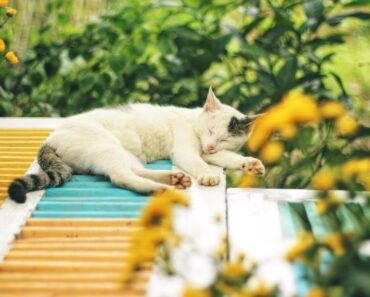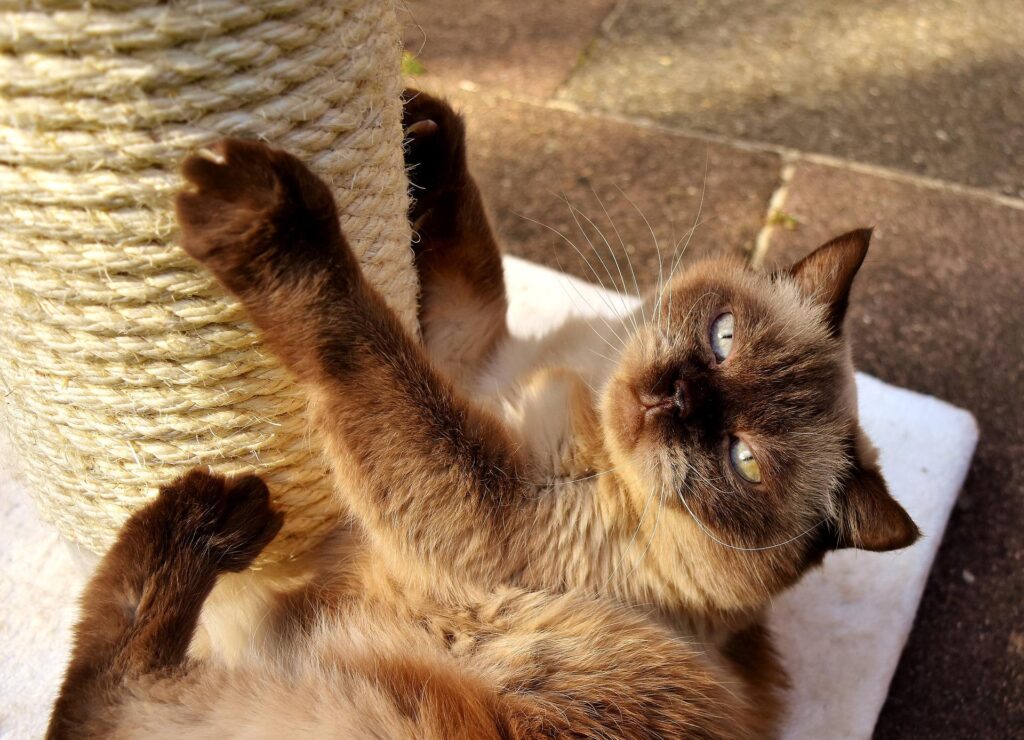
Sometimes pets don’t break their childhood habits and carry them into adulthood. Adult cats scratch and bite, and owners belatedly discover why their pets behave this way. It’s simple: there is a clear cause, which requires a deliberate approach. And the cause is likely to come from childhood. A kitten is not weaned from scratching, and as an adult, it continues to do so.
Is scratching always aggression?
Adult cats tend to scratch primarily because of aggression caused by external factors, health problems, or an emotional context.
But there are other situations and reasons why a cat may scratch a human:
- A cat is bored and demands more attention from its owner, touching him with its paw and occasionally sticking out its claws.
- Adult cats are often childishly mischievous. In this case, they will run around the house like kittens, jumping around, chasing noisy or clattering objects, and playing with their human’s hands and feet.
- Sometimes an animal instinctively shows sympathy. In the wild, cats express their “love” for an object of interest by licking it and then lightly nibbling or scratching it. If a cat bites its owner lightly, alternating between licking and light scratching, it is probably expressing its love.
Before scolding a cat or using corrective measures, you should try to find the reason for the behavior, as it is not always aggressive. This means that weaning should be done more gently.
Why do adult cats scratch?
There are many reasons why an adult cat scratches, and sometimes several reasons for the same situation. Before training, the cause of the scratching should be diagnosed and, depending on the conclusion reached, a method of extermination should be chosen.
Inability to retract claws
Some adult cats may scratch due to “inept” claw manipulation. There may be individuals who do not fully retract their claws when playing with them. Of course, this is not done on purpose. This happens especially often to cats that played with human hands as children – so they are used to scratching themselves while playing.
Sometimes cats climb on their owner’s legs and backs as if on a tree. This may be due to overexcitement, fear or a common habit – the cat has learned since childhood to climb on the person you love and sit on his shoulders.
In both cases, it uses its claws to hold on and not fall. These situations have nothing to do with aggression – it’s just that the cat has not been trained to climb on a human.
Playful fuse
Cat play is often driven by instinct. A house cat may attack a ball, a toy, its reflection in a mirror or its owner’s legs and arms. During play, the cat becomes unconscious and begins to “really” chase moving, noisy, shiny, or clattering objects.
Often, the owner’s gesticulating hands become the object of the hunt. A frustrated cat will attack and, in a fit of anger, may dig out its claws and show its teeth. If the animal is well-behaved, all it takes is a scolding “no” for the cat to loosen its claws and resume harmless play.
Aggression
Sometimes a cat will bite or scratch its owner’s arms or legs in a state of aggression. Anger can occur because of poor health, pregnancy, or if a cat has been adopted from the street and is not yet well socialized.
Animals sometimes show aggression in response to stressors. It is extremely rare for anger to be unexplained – cats are not creatures that exhibit bad temper without reason.
When a new family member (such as a spouse or young child) is introduced into the home, cats become jealous and aggressive toward the newcomer. In this way, they mark the property in the form of territory or object of sympathy and friendship – the owner.
If a cat is pregnant, she may scratch or bite intruders and troublesome family members if she lacks peace, quiet and privacy. The same situation persists after delivery.
Feral cats that have been removed from the street at an advanced age, however, have a difficult socialization process and may become aggressive toward all household members for a very long time, mistaking them for enemies. Conflicts arise over food, toys or the cat’s personal space.
Sexual drive or overexcitement
Another explanation for why cats bite and scratch is sexual predation. This factor is related to natural instincts: if the cat cannot satisfy its arousal, it will show signs of hormonal aggression.
Another possibility is that the cat takes its owner as an object of sexual desire. The cat may then attack with its claws and teeth its feet and hands in order to “possess” the object of its desire. Although (or ), hormones can intervene at certain times in life.
A defensive reaction
Cats remain predators by nature, even if they are pets, and live in apartments since their early childhood. They therefore have a highly developed protective instinct. A cat will guard its personal space, food bowls or offspring with care. An attack on a favorite object only provokes one desire: to protect it by any means possible.
Animals also defend themselves when they are afraid, for example on their first trip in an elevator, car or even in a special carrier. Particularly sensitive kittens can be frightened when they meet new people or when confronted with pungent and unpleasant smells.
A way to get attention
If the owner is often absent or pays little attention to the cat, rarely plays with it or shows it any affection, the owner will try to get the cat’s attention by scratching or biting it. This will encourage the cat to play or let it know that it needs to be petted, fed, taken for a walk, etc.
These techniques are not aggressive, but rather demonstrate the cat’s interest in the person, expressing sympathy and willingness to make positive contact – play or affection.
Rules for keeping a pet
Cats are known to be sensitive and easily stressed animals. Therefore, when trying to wean a cat from its claws, it is important to remember the golden rule: you must not yell, swear or physically punish it. The pet must be raised in a friendly environment and establish a warm connection, as this is the only way to achieve this.
A trusting relationship
Before any educational measures are implemented, you need to establish a trusting relationship with the cat. It’s worth remembering here that a cat makes friends, considers people his own and builds a relationship accordingly – he may share his food, show friendship or even romantic sympathy, entrust his place or, on rare occasions, his offspring.
The relationship should be established at an early age, when the kitten comes home. But sometimes a person adopts an adult cat – the friendship should be developed gradually by gaining the cat’s trust.
Appropriate play
Play with the cat with special toys and never with your hands. If the kitten is used to this, it will continue to do so as an adult.
If you have an adult cat with inappropriate play habits, you should gradually wean it from biting and scratching by directing its aggressive attacks to a ball, balloon or toy mouse.
Getting the right reaction
Cats listen primarily to their instincts, habits and instincts. So the best way to wean them off the claw is to develop a subconscious response.
If you don’t like the cat’s claws, you need to use retaliatory measures that help the cat understand that humans are not comfortable with claws. An animal will quickly develop a reflex to this action:
- You can gently spray water from a sprayer – not even on the cat, just next to it;
- Make a loud, resounding noise (like clapping or banging on the table) to distract the cat;
- Say “No!” sternly and loudly, without shouting.
You can combine several techniques at once. Do this every time the cat scratches, to maintain a systematic approach. In this case, the animal will understand that scratching or biting is not pleasant. However, if you suspect that the animal is ill or stressed, it is best to avoid this method. Eliminate what is bothering your pet and then educate it.
Eliminate aggression
Cats often scratch and bite as a result of aggression caused by stress or irritants. If you remove it from the cat’s personal environment, chances are the cat will stop being aggressive on its own. In this case, educational measures are not necessary. The key is to identify the source of the stress and try to remove it from the cat.
If the aggression is directed at a new family member or involves a second animal in the household, a set of measures to educate and establish a trusting relationship with the cat (if it is a human) will be necessary.
Additional measures
Additional measures against cat claws should not be forgotten. These measures, combined with educational measures, will help you to overcome the weaning period more easily.
Manicure
Manicuring cats is a very important activity for all domestic cats. It is done with a special tool that is carefully selected according to the breed, claws and behavior of the cat.
The procedure is unpleasant and can be traumatic for the cat, so you should familiarize yourself with it before starting. If the breeder has any difficulties or concerns, he or she should consult a groomer or veterinarian.
Anti-scratch pads
Some breeders use special pads that prevent the cat from scratching and damaging the furniture, even if the cat does get its claws out.
Scratch pads are made of silicone or rubber, or more rarely, plastic. They come in different colors and are attached with a special glue.
The advantage of anti-scratch pads is that the cat can not scratch, damage the furniture or flooring. This is especially useful for families with young children who may stress or hurt the cat and get scratched in return.
Pads are also useful for owners of temperamental and unpredictable cats with whom you cannot establish a trusting relationship. And the most important advantage is that the cat will not be able to hurt itself with its claws. This can happen with skin diseases that cause . With the anti-claws, the cat will not make extra claws.
Pads also have disadvantages: if the cat goes outside, the pads are absolutely contraindicated for him – outside, the claws are a means of protection for the cat, and without them it is impossible to climb, for example, a tree.
Therefore, the decision about the pads must be made carefully, taking into account not only the interest of the cat, but also its comfort.
Weaning a cat from its claws and bites, even if it is an adult, is not a serious problem. The key is to act responsibly, assess the situation, identify the cause and act accordingly in a strict and consistent manner.

